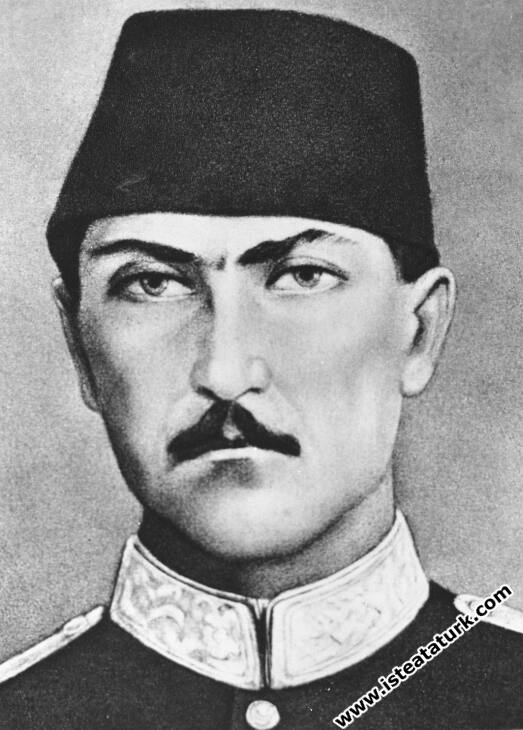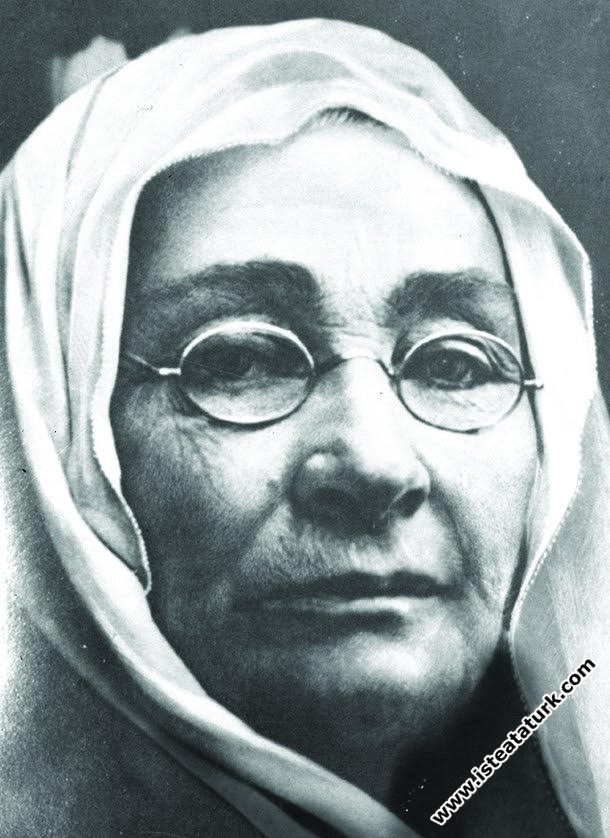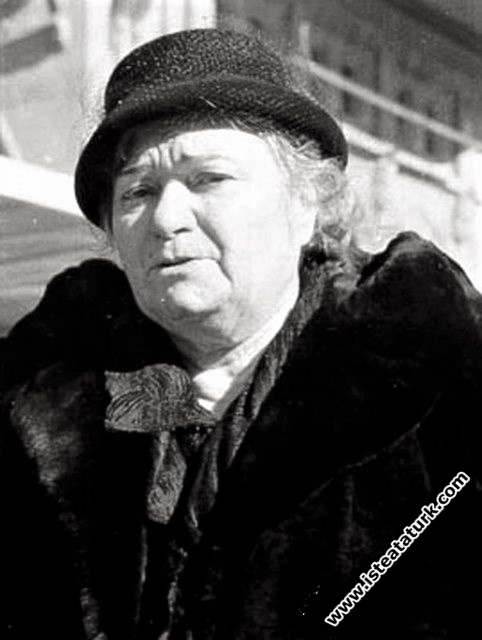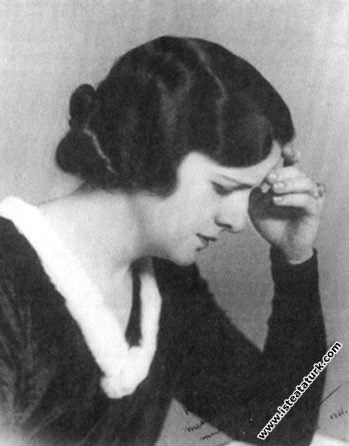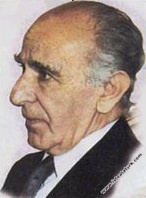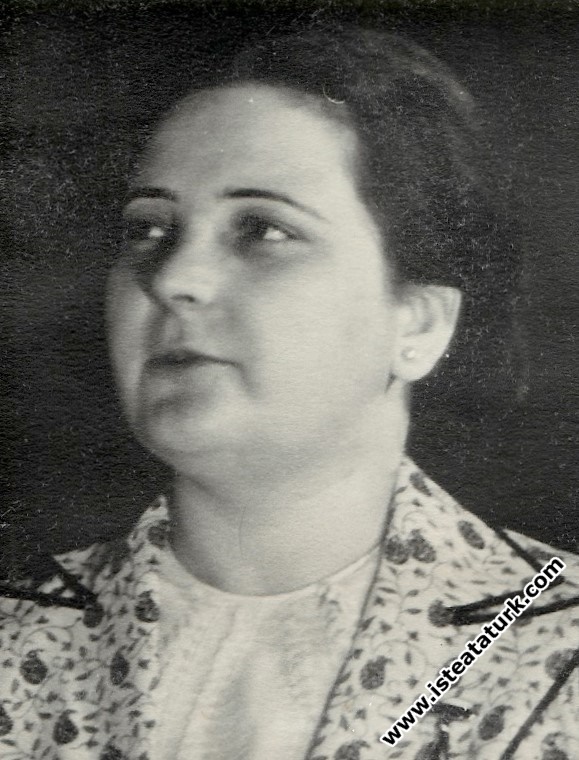
Afet İnan
Character Size
Life of Afet İnan
AFET İNAN
Afet İnan was born on October 30, 1908 at 21:00 in Polyoroz or Kesendire, a town of Thessaloniki. His father is İsmail Hakkı Bey, a forest officer who graduated from Istanbul Halkalı High Agricultural School and joined the Kuvayi Milliye. His mother is Şehzane Hanım, who is the granddaughter of Doyran Mudarri Emrullah Efendi. His brother Ahmet Reşat was born in Vodina.
Afet Inan started primary school on March 4, 1913 in Adapazarı, the Balkan War made this family an immigrant. After Adapazarı, he spent his childhood years in Ankara, Mihalıççık, then again in Ankara's district, Karaoğlan, Biga. Afet Inan lost her mother on 15 May 1915 due to tuberculosis. Afet's sister named Nezihe was born in Biga from the next wife of Afet's father. Afet Inan completed his six-year primary school education in 1920 and received his diploma. They moved to Alanya in 1921. In 1922, Afet İnan received his teaching license in Elmalı, and on September 1, 1922, he was appointed head teacher to Elmalı Girls' School. Afet Inan, who constantly moved due to her father's civil service, graduated from Bursa Girls' Teachers' School in 1925. She met Mustafa Kemal Atatürk at a tea banquet when she was newly appointed to the Reddi İlhak School in İzmir. The fact that Afet Inan was from Doyran caught the attention of Atatürk, he met his family. Before long, Afet Inan was appointed to Ankara as a teacher.
With the permission of the Ministry, he started classes in a boarding school called “Rochemont” in Lausanne, where students from foreign countries are located. Atatürk sent Afet to Switzerland to learn French. When he returned to Turkey in 1927, Atatürk was making the corrections of the Great Speech. As Afet Inan wanted to continue her education, she entered the Istanbul French Girls' High School (Notre Dame de Sion) as a boarder. While he was studying at this school, the use of insulting expressions for Turks in the textbooks made Afet Inan very uncomfortable and asked, "What is the real place of the Turks in the history of the world since the earliest times, and what has been their service in civilization?" she set about working to answer the question. Meanwhile, in the academic year of 1929-30, she started to teach history and civics at the Ankara Music Teachers' School. Afet Inan made translations from the book "Instruction Civique" because Atatürk found the book he was going to teach for civics to be insufficient, Tevfik Bıyıklıoğlu researched and translated German works, and Atatürk himself wrote on some subjects and created a work called Civil Information. Later, Afet İnan, who advocated that women should have the right to vote and to be elected, gave her first conference on women's rights. This conference coincides with the right to women in municipal elections. Atatürk asked Afet Inan to work on the explanation of the 2nd and 3rd articles of the Turkish Hearths Law, and Afet Inan gave a speech explaining the purpose and function of the Turkish Hearths, and explaining the place of the Turks in the history of civilization and what they should be. Tevfik Bıyıklıoğlu researched and translated German works and Atatürk himself wrote on some subjects and created a work called Civil Information. Later, Afet İnan, who advocated that women should have the right to vote and to be elected, gave her first conference on women's rights. This conference coincides with the right to women in municipal elections. Atatürk asked Afet Inan to work on the explanation of the 2nd and 3rd articles of the Turkish Hearths Law, and Afet Inan gave a speech explaining the purpose and function of the Turkish Hearths, and explaining the place of the Turks in the history of civilization and what they should be. Tevfik Bıyıklıoğlu researched and translated German works and Atatürk himself wrote on some subjects and created a work called Civil Information. Later, Afet İnan, who advocated that women should have the right to vote and to be elected, gave her first conference on women's rights. This conference coincides with the right to women in municipal elections. Atatürk asked Afet Inan to work on the explanation of the 2nd and 3rd articles of the Turkish Hearths Law, and Afet Inan gave a speech explaining the purpose and function of the Turkish Hearths, and explaining the place of the Turks in the history of civilization and what they should be. Later, Afet İnan, who advocated that women should have the right to vote and to be elected, gave her first conference on women's rights. This conference coincides with the right to women in municipal elections. Atatürk asked Afet Inan to work on the explanation of the 2nd and 3rd articles of the Turkish Hearths Law, and Afet Inan gave a speech explaining the purpose and function of the Turkish Hearths, and explaining the place of the Turks in the history of civilization and what they should be. Later, Afet İnan, who advocated that women should have the right to vote and to be elected, gave her first conference on women's rights. This conference coincides with the right to women in municipal elections. Atatürk asked Afet Inan to work on the explanation of the 2nd and 3rd articles of the Turkish Hearths Law, and Afet Inan gave a speech explaining the purpose and function of the Turkish Hearths, and explaining the place of the Turks in the history of civilization and what they should be.
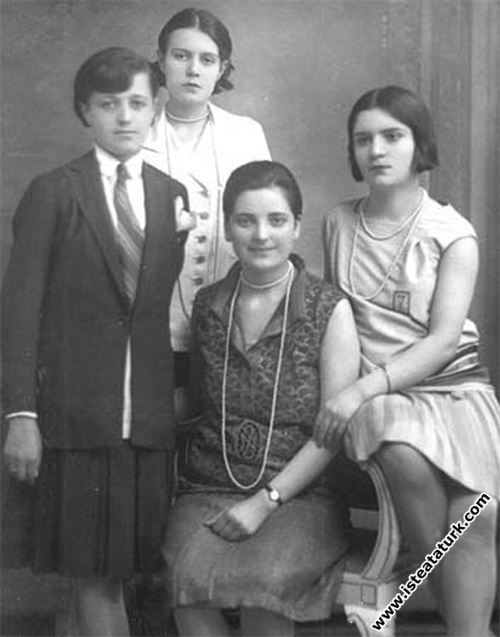
Atatürk's Spiritual Daughters are together. Rukiye, Sabiha Gökçen, Afet and Zehra are seen respectively.
At the congress attended by Atatürk on April 28, 1930, it was decided that the research of Turkish history would be given to the central committee and it was stated that the central committee would constitute the TURKISH HISTORY COMMITTEE. The first members of this committee are: Afet Inan, Tevfik Bıyıklıoğlu, Vasıf Çınar, Yusuf Akçura, Samih Rıfat, Halil Ethem Eldem, Yusuf Ziya Özer, Sadri Maksudi Arsal, Dr. Reşit Galip, Reşit Saffet Atabinen, İsmail Hakkı Uzunçarşılı, Ragıp Hulusi Özden, Mükrimin Halil Yınanç, Zakir Kadiri Ugan, Hamit Zübeyr Koşay and Mesaroş. On April 15, 1931, by the order of Atatürk, the Turkish Hearths took the name of “Turkish History Research Society” with the same founding members. Then, archaeological excavations started for historical researches. In 1929, Halil Ethem Eldem, Director of the National Museums, found the America map of Piri Reis, which geography science did not know until then.
At the opening of Ankara Faculty of Language, History and Geography, opened on January 9, 1936, Afet Inan gave the first lecture as "Introduction to History" as the Vice President of TTK. Although the Ministry of Culture offered to give Afet Inan a teaching position at the faculty, Afet Inan stated that he could only accept it after completing his undergraduate and doctoral studies. Thereupon, he enrolled in the Department of Contemporary and Modern History, Faculty of Social and Economic Sciences, University of Geneva. Since the mention of Turks as barbarians hurt Afet Inan, he started to research and write on this subject. The subject of Afet Inan's doctoral thesis was to determine the place of the Turkish nation among the nations of the world on scientific basis, according to the general situation in the history of Turkey and a survey on anthropological data. He received his undergraduate diploma in July 1938, He received his doctorate the following year, again in July 1939, by passing the exam and defending the thesis. Afet Inan corresponded frequently with Ataturk during his education in Geneva. Afet Inan's only regret is staying away from Çankaya University (scientific conversations at the table).
When Afet Inan returned to Turkey, he was appointed to the faculty as an assistant professor, becoming an associate professor in 1942 and a professor in 1950. He retired in June 1977 when he was the Chair of the History of the Revolution of the Republic of Turkey, upon his request. Afet İnan, who was a gynecology and obstetrician in 1940, through the Bolu deputy Tahir Hitit. He was married to Rifat Inan. She took the surname “İnan” after her marriage, her previous surname was Uzmay. Uzmay is also his father's surname, that is, he was not given a surname by Atatürk. Afet Inan had a daughter named Arı and a son named Demir. Afet Inan had a happy and simple family life. She died on the night of June 7, 1985. İnanlar started to give the Afet İnan History Research Award, first alone and then together with the History Foundation.
Source: Prof. Dr. Afet İnan, Yayına Hazırlayan Arı İnan, Remzi Kitabevi, İstanbul 2005. ISBN:975-14-1065-7
